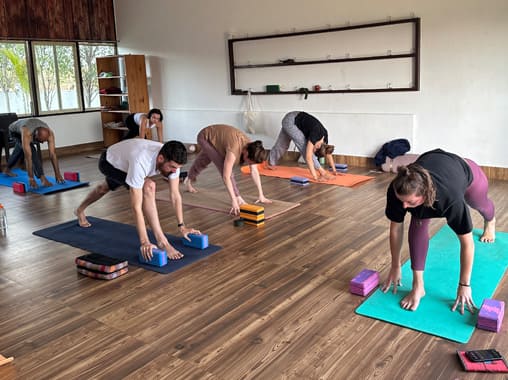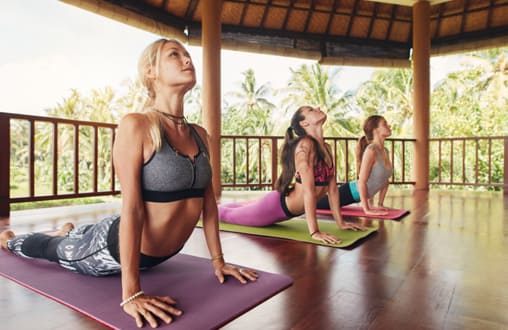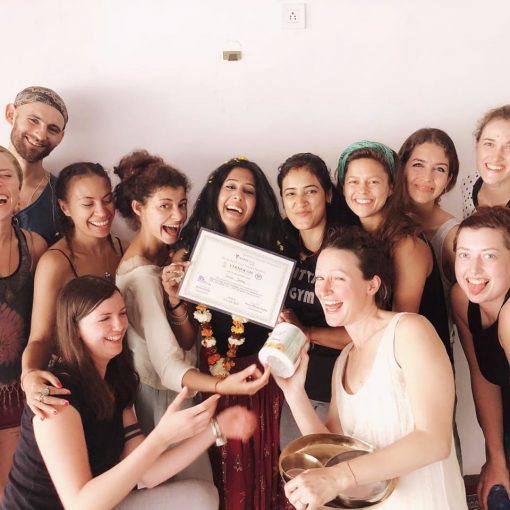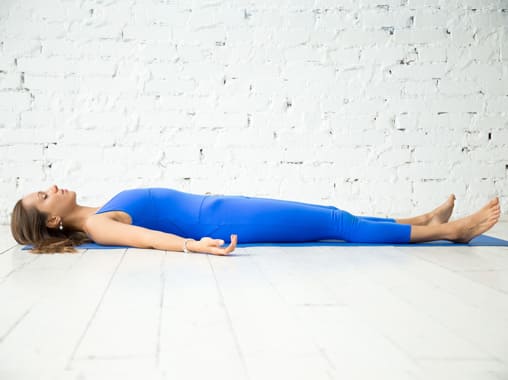What is Pranayama?
Pranayama is a Sanskrit term that refers to the discipline of regulating one’s breath in yoga. It is composed of the two terms “prana,” which denotes life force or vital energy, and “Yama,” which denotes control or regulation. Pranayama means “breath control” or “breath regulation,” respectively. According to Patanjali’s Yoga Sutras, pranayama is one of the eight limbs of yoga. It incorporates several breathing methods, including alternate nostril breathing, a fast breath of fire, and slow, deep breathing. These methods help to promote general health and well-being by reducing stress and anxiety, boosting energy levels, and calming the mind. Pranayama is frequently used both as a standalone method and in conjunction with meditation and yoga asanas (postures). It is thought to have a significant impact on the body, mind, and soul, supporting healing and change by balancing the body’s energy systems.

Health Benefits of Pranayama
There are many physical, mental, and spiritual advantages to pranayama, the traditional yogic technique of regulated breathing. The following are a few of the main health advantages of pranayama:
- Enhances breathing: Pranayama exercises can increase lung capacity, strengthen the muscles which blow air in and out of the lungs, and improve the way that oxygen and carbon dioxide are exchanged in the lungs.
- Reduces anxiety and stress: Pranayama can encourage relaxation and feelings of calm by lowering the production of stress hormones like cortisol.
- Improves cardiovascular health: Pranayama can help control blood pressure, increase blood flow, and lower the risk of heart attacks and strokes.
- Immunity-boosting: Pranayama can activate the immune system, aiding the body’s defense against illnesses and infections.
- Enhances mental health: Pranayama can enhance mood, cognitive performance, and general well-being while reducing the signs and symptoms of anxiety, depression, and other mental health disorders.
- Increases energy levels: Pranayama can assist increase energy levels and lessen sensations of exhaustion and sluggishness.
- Promotes relaxation and better sleep: Pranayama can help in promoting relaxation, lowering insomnia, and improve the quality of sleep.
- Improves digestion: By stimulating the digestive tract and improving digestion, pranayama can help treat conditions like bloating, constipation, and indigestion.
- Balances the nervous system: Pranayama can help balance the sympathetic and parasympathetic nervous systems, which can improve overall health and reduce the risk of chronic diseases.
Types of Pranayama
1. Nadi Shodhana (Alternate Nostril Breathing)
Benefits: Nadi Shodhana (Alternate Nostril Breathing) include calming the mind, achieving nervous system balance, enhancing respiratory function, and lowering stress and anxiety.
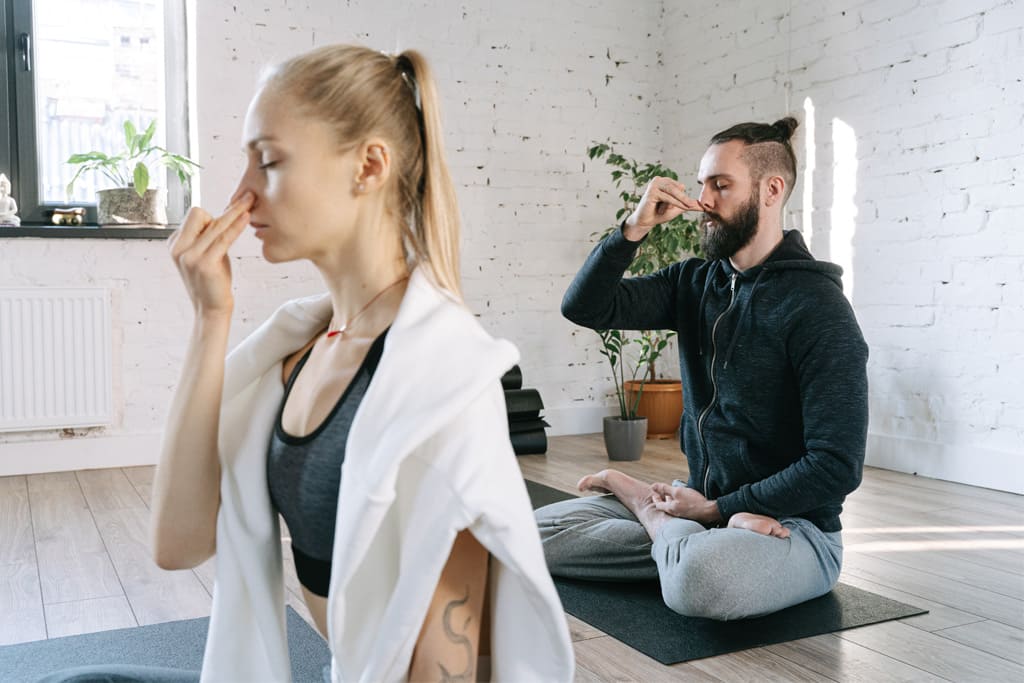
How to perform:
- Close your eyes and choose a comfortable sitting position. Bring your right hand up to your face while placing your left hand on your left knee with the palm facing up.
- Deeply inhale through your left nose while placing your right thumb over your right nostril. After that, release your right thumb from your right nostril and exhale through your right nose while keeping your left nostril closed with your right ring finger.
- Breathe deeply through your right nostril, then squeeze it shut with your thumb. Then, let go of your left nose with your ring finger on your right hand, and let out your breath through your left nostril.
2. Ujjayi (Ocean Breathing)
Benefits: Ujjayi (Ocean Breathing) Increases respiratory efficiency, calms the mind, and lowers tension and anxiety.
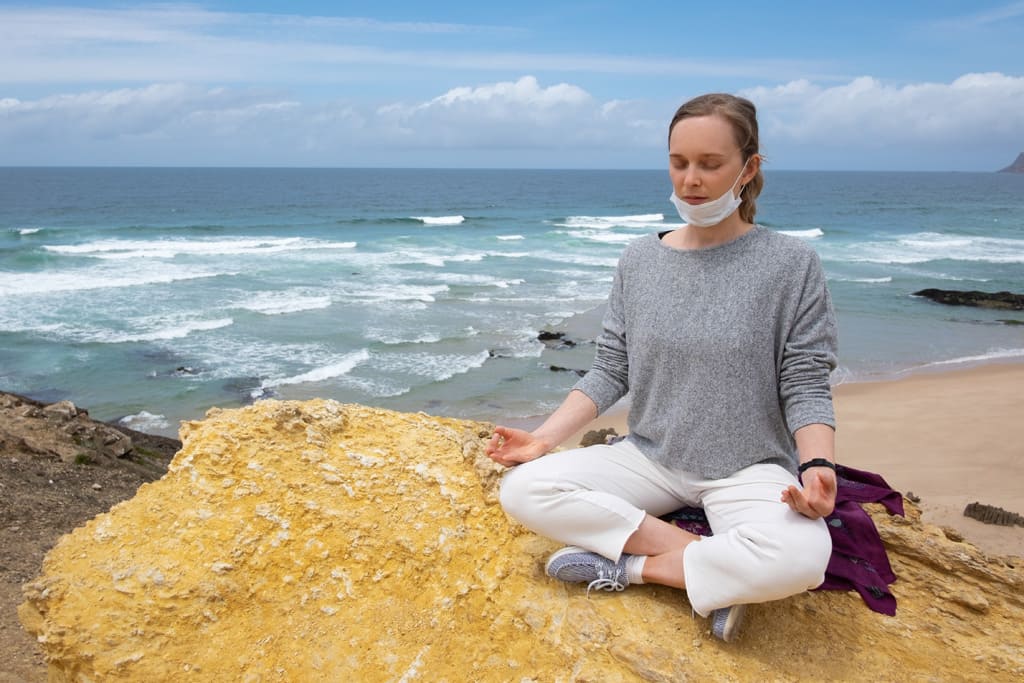
How to perform:
- Close your eyes while assuming a relaxed posture and a straight spine. Make a “ha” sound as you inhale deeply with your nose and exhale through your mouth.
- Shut your mouth and take a slow, deep breath through your nose, a small hissing sound coming from the back of your throat.
- Hold your breath for four counts, then slowly let it out through your nose while continuing to hiss. Continue for 5–10 rounds.
3. Kapalbhati (Breath of Fire)
Benefits: Boosting energy levels, enhancing mental clarity, and improving respiratory function.
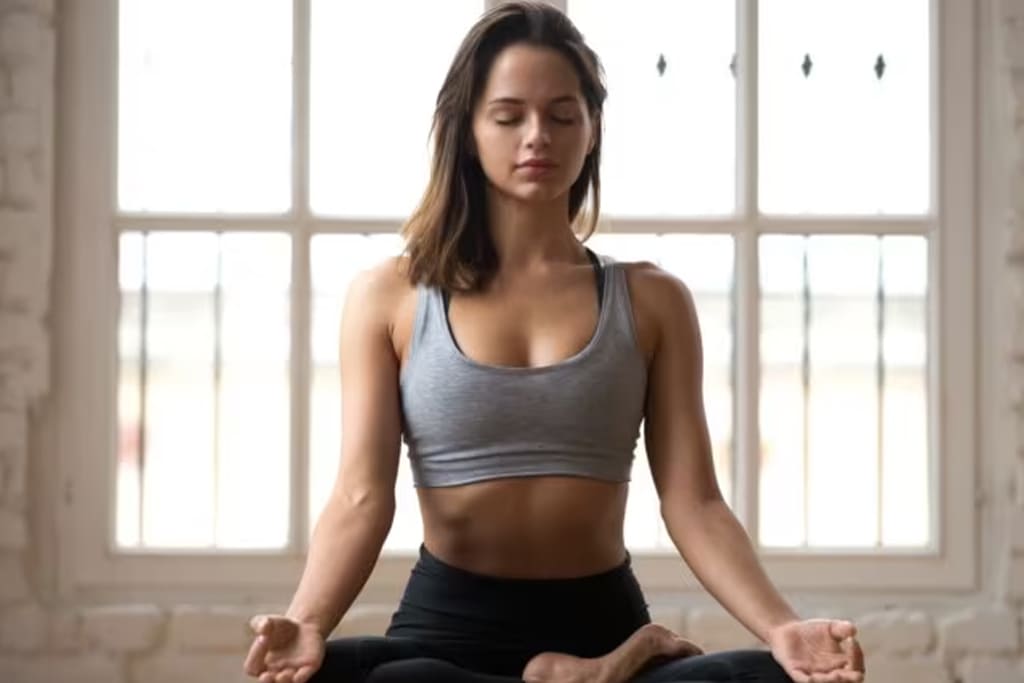
How to perform:
- Close your eyes while assuming a relaxed posture and a straight spine.
- Breath deeply through your nose, and then firmly expel through your nose while tensing your abs.
- While making a conscious effort to contract the abdomen during the exhale, let the inhale come naturally.
- Start with 20–30 breaths, then increase progressively to 100.
4. Bhastrika (Bellows Breath)
Benefits: Boosting energy levels, enhancing respiratory efficiency, and encouraging mental clarity.
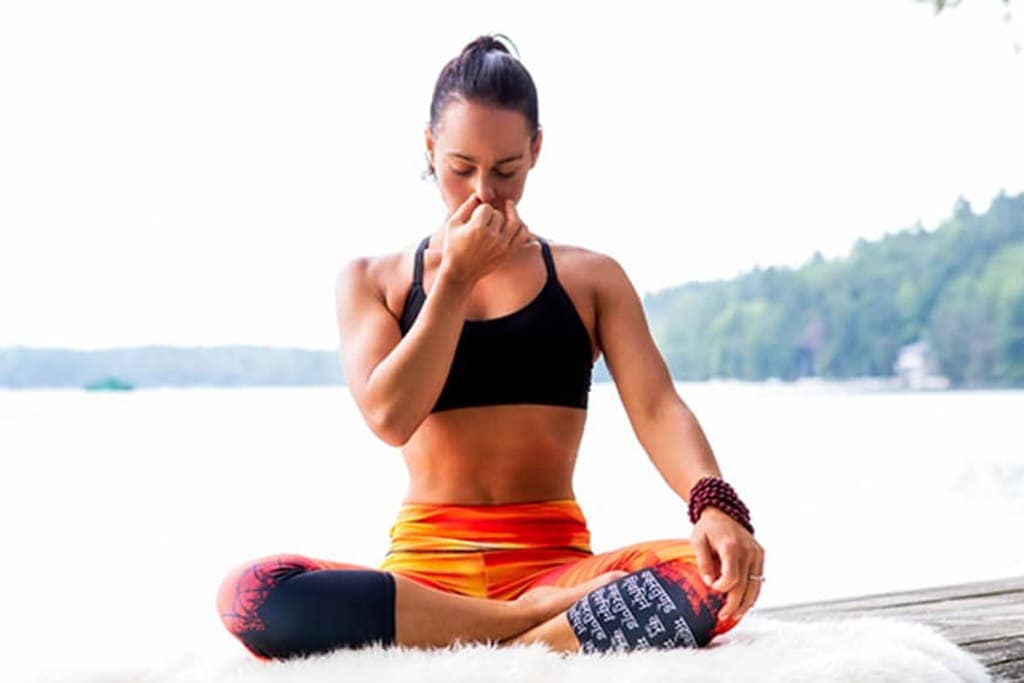
How to perform:
- Close your eyes while assuming a relaxed posture and a straight spine.
- Breathe in through your nose deeply and expel through your nose vigorously while using your abdominal muscles.
- Once more, take a deep breath in and then aggressively exhale through your nose while quickly constricting and relaxing your abdominal muscles.
- Then, progressively raise to 100 breaths after repeating for 20 to 30 times.
Practicing Tips
The practice of pranayama is potent and may be very beneficial for both physical and mental health. Here are some pointers for pranayama:
- If pranayama is new to you, start with simple breathing techniques before progressing to more difficult ones. You can expand your lung capacity and lessen your risk of discomfort or damage by doing this.
- Choose a space that is peaceful, calm, and distraction-free to practice pranayama. By doing this, you may avoid outside distractions and keep your focus on your breathing.
- If you have trouble sitting on the floor, you may use a cushion or a chair as a prop to support your posture and make the exercise more comfortable.
- Pranayama should be conducted on an empty stomach or, if possible, at least 2-3 hours after a meal. You may practice without any aches or discomfort by doing this.
- Pay close attention to your breathing and the sensations that develop in your body with each inhalation and exhalation. This will help you stay mindful and present during the practice.
- Being patient and consistent are essential qualities for pranayama. Even if you simply practice for a short while each day, progressively lengthens and intensify it.
- It is essential that you consult with a trained yoga instructor who can guide you through the correct procedures and safety precautions if you are new to pranayama or have any health issues.

